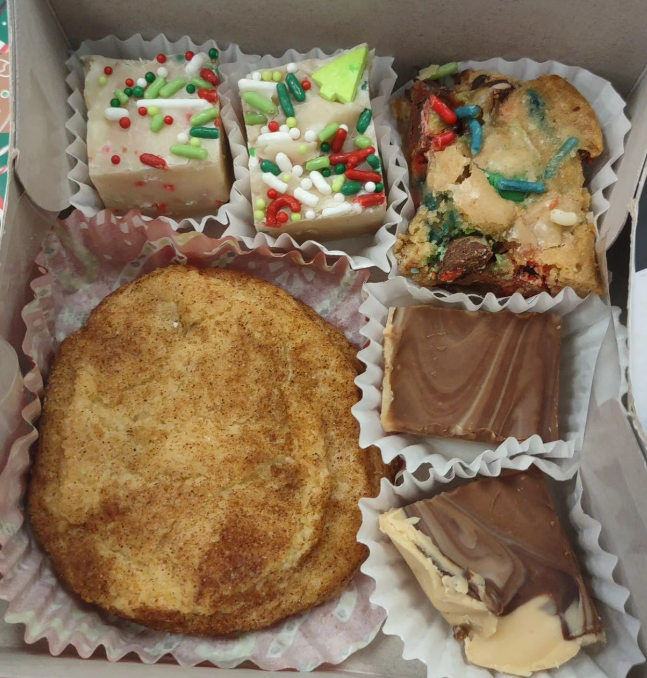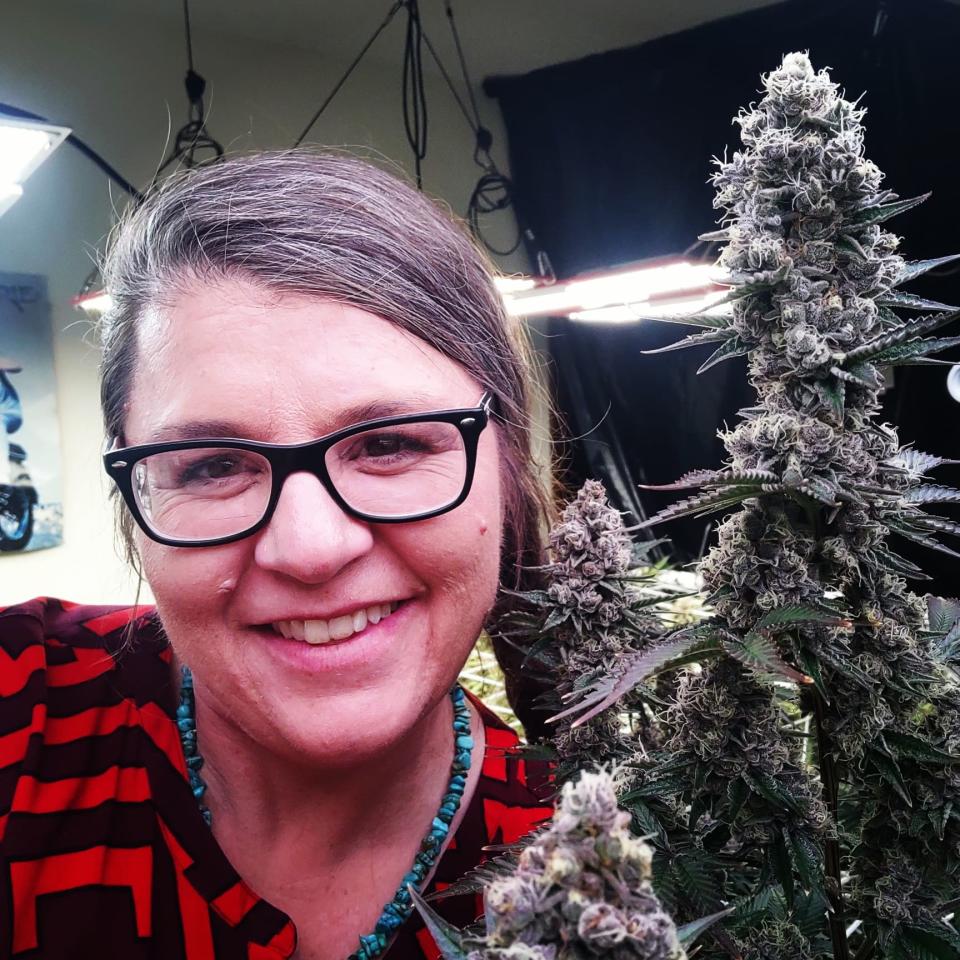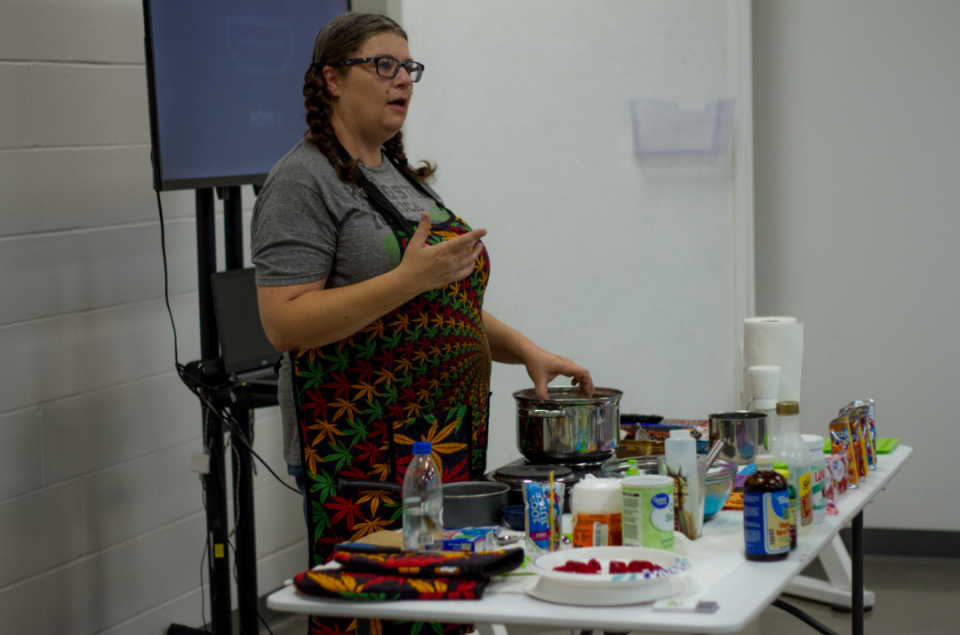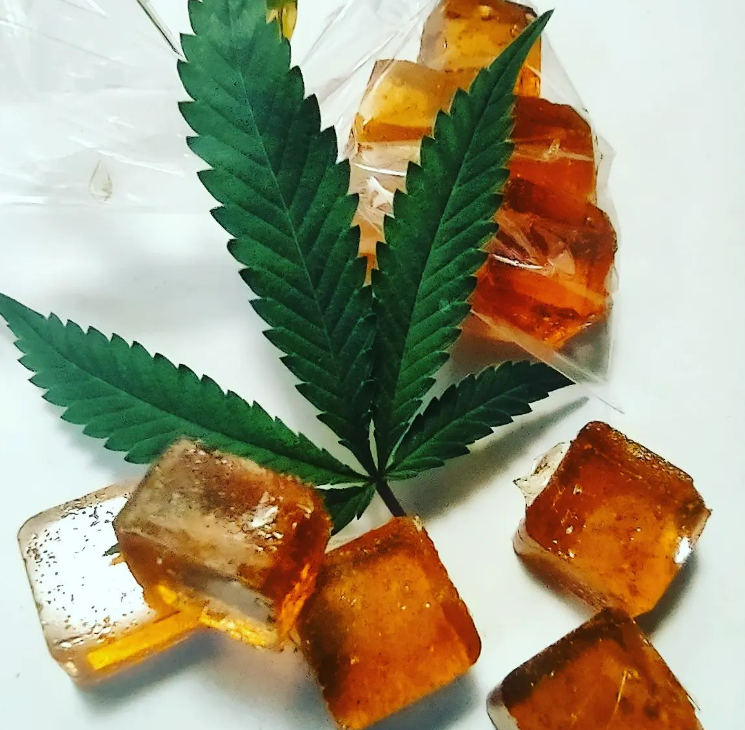Interested in making homemade 4/20 cannabutter? Here's how to get started

The unofficial marijuana holiday, 4/20, is just around the corner. In anticipation, adult-use consumers may be gearing up to go out for cannabis celebrations or stay in with their favorite strains.
One way to celebrate 4/20 is by whipping up some marijuana-infused edibles at home to enjoy alone or with a group of friends.
The News-Leader spoke with Farrah Garrison, owner of Farijuana Farms, about making marijuana-infused butter at home, which can be used in a variety of recipes. Through Farijuana Farms, Garrison provides consultations and teaches others how to grow and cook with marijuana.
How do you make cannabutter?
Cannabis butter, more commonly known as cannabutter, is one of the most popular marijuana-infused ingredients. Folks who have indulged in a pot brownie or two were most likely enjoying a baked good made with cannabutter.
To make a standard batch of cannabutter, bakers need:
Cookie sheet
Mason jar
Cheese cloth, reusable coffee filter or another type of strainer
Butter mold
1/4 ounce or 7 grams of marijuana flower
1/4 cup butter
1/16 teaspoon lecithin
The first and most important step in making cannabutter is the decarboxylation process, which activates the psychoactive compounds in the marijuana flower.
More: Does Amendment 3 allow Missourians to make or sell marijuana edibles?
"To get THC, the kind that gets you high, you have to activate it or heat it up, like you would if you were lighting a joint," Garrison explained.

To "decarb" the marijuana flower, Garrison recommended setting an oven to 240 degrees Fahrenheit, laying out ground marijuana flower flat on a cookie sheet and baking it for 40 minutes. After taking the "baked" marijuana out of the oven, let it cool.
Leafly, an online marijuana resource, recommends avoiding microwaves for the decarboxylation process, as the temperature cannot be controlled.
Next, reduce the temperature of the oven to between 200 and 220 degrees Fahrenheit. Then, combine the cooled marijuana, butter and lecithin in a mason jar. Bake the mason jar combination in the oven for 15 minutes.

Remove the jar from the oven and pour the warmed liquid into a butter mold. Don't stir the liquid, just pour it. Bake the butter for another 15 minutes in the mold. Lastly, strain the butter using a cheese cloth, reusable coffee filter or another type of filter. The cannabutter is then ready to use.
Cannabutter, Garrison said, can be used in any recipe that calls for regular butter, including cupcakes, cookies and bread.
This same recipe can be used to make cannabis oil, replacing the 1/4 cup of butter with 1/4 cup of coconut oil.
Most importantly, add lecithin to your cart
The "key component" to successful cannabutter is lecithin, Garrison said, because it combines the THC with the butter's fat. The most common types of lecithin found in stores are liquid soy and sunflower lecithin. They can also be purchased online.
Lecithin also comes in capsules. Garrison said sunflower lecithin can be purchased in the vitamin section at Walmart.
What strain is best for cannabutter?
As Missouri's recreational marijuana industry is still so new, Garrison said she tends not to recommend specific strains for making edibles, as finding the same strain in different areas can be difficult. Rather, she recommends to "follow your nose." If a marijuana strain satisfies the nose, it will likely satisfy the taste buds. This is because of terpenes, which give marijuana its taste and smell and determine what effects will be perceived.
Common pitfalls to avoid when making cannabutter at home
Garrison said the most common pitfall she has noticed when working and speaking with folks making cannabutter is baking the marijuana flower for too long. If the marijuana flower is baked for too long, it can lose its effectiveness.
However, for those interested in a more "sleepy time" medication, Garrison said, baking the flower for longer — about 45 minutes the first time in the oven — will result in the conversion to CBN.
CBN is a cannabinol, like THC and CBD. It is weaker than THC and is often used for sleep. While large doses of CBN may result in mild psychoactive effects, its effects are quite similar to CBD.

"Low and slow"
When cooking with cannabutter, it can be hard to determine how potent the ingredient is, as potency is determined by marijuana's THC level and the decarboxylation time and temperature.
When cooking with or eating cannabutter on a snack, Garrison said start "low and slow."
Specifically, Leafly recommends spreading 1/4-1/2 teaspoon on a snack to determine the dose's effects after an hour. Then, increase or decrease the dose accordingly.
Who can make edibles and where can you consume them?
In Missouri, adults over the age of 21 may purchase, possess, consume, ingest, inhale, process, transport and deliver three ounces or less of dried, unprocessed marijuana. This means that folks who are of age can, yes, make and consume marijuana infused-edibles at home.
Recreational marijuana is allowed anywhere smoking tobacco is. However, it is still illegal to consume marijuana of any type while driving or operating a motor vehicle, including trains, airplanes and boats.
Can you sell homemade edibles?
The short answer is no. Edibles, or more broadly marijuana-infused products, can only be sold at marijuana dispensary facilities. Operating a marijuana dispensary facility requires an active license, which is obtained through the Missouri Department of Health and Senior Services.
Why April 20?
The story behind how April 20 became the unofficial marijuana holiday remains foggy, but there are a few popular theories. The most likely centers around a group of high school friends in California during the 1970s.
The friends, students at San Rafael High School in California, called themselves "the Waldos." A brother of one of the friend's allegedly grew marijuana in the woods near the school and was paranoid about being caught. He drew up a map of where to find the marijuana and gave it to "the Waldos" to harvest, according to PBS.
One day during the 1971 fall semester, "the Waldos" met after school at 4:20 p.m., smoked a joint and headed out into the woods, according to PBS. They were never able to find the marijuana patch, but their code, "420" did seem to catch on. Through another brother of a friend, "the Waldos" began hanging out around the Grateful Dead, which is how many believe the slang spread.
Greta Cross is the trending topics reporter for the Springfield News-Leader. Follow her on X and Instagram @gretacrossphoto. Story idea? Email her at gcross@gannett.com.
This article originally appeared on Springfield News-Leader: Marijuana edibles: Tips for making successful cannabutter at home

